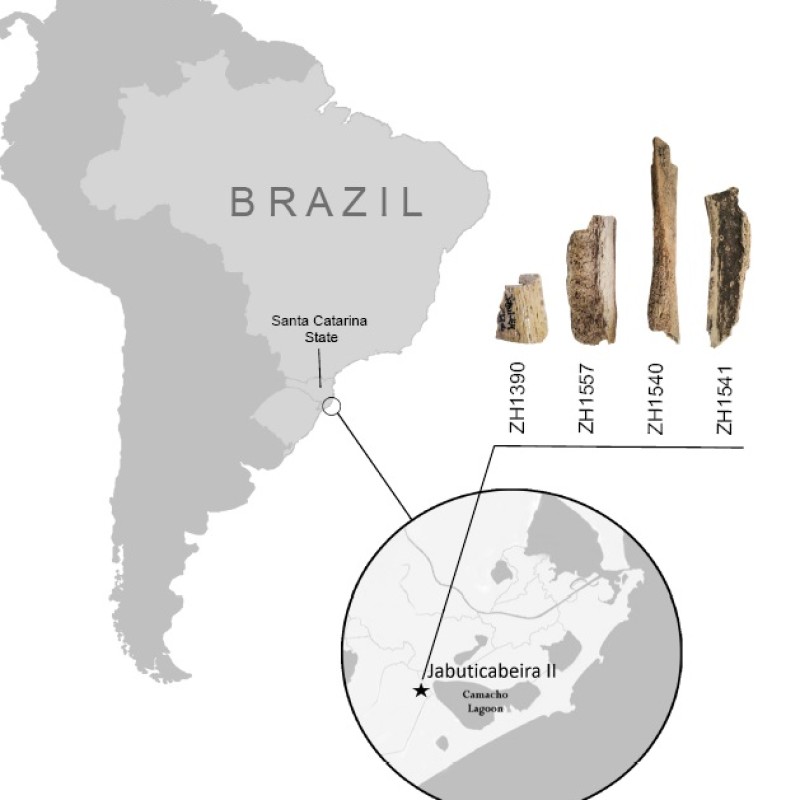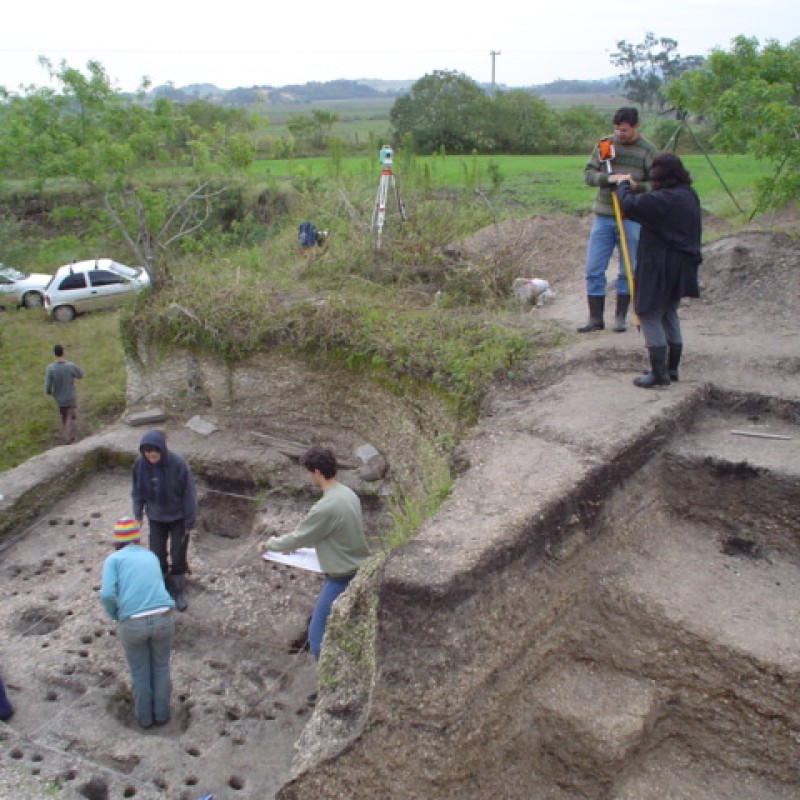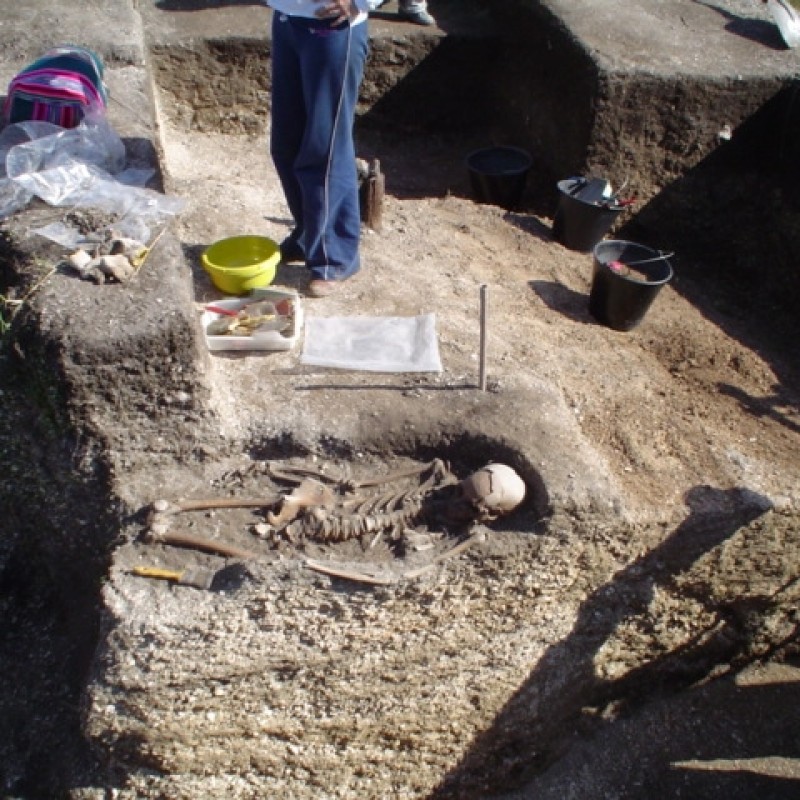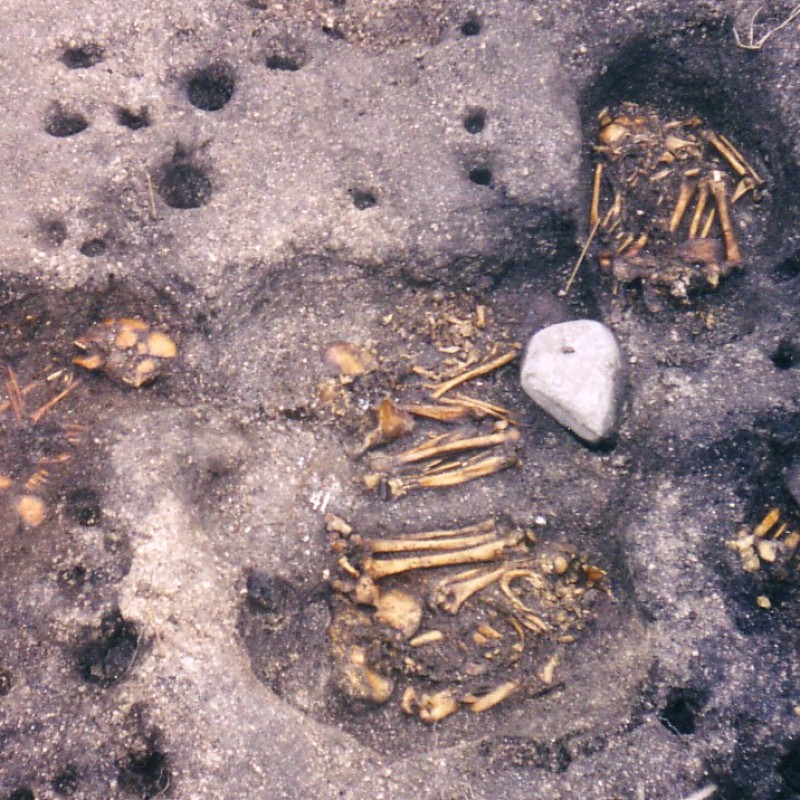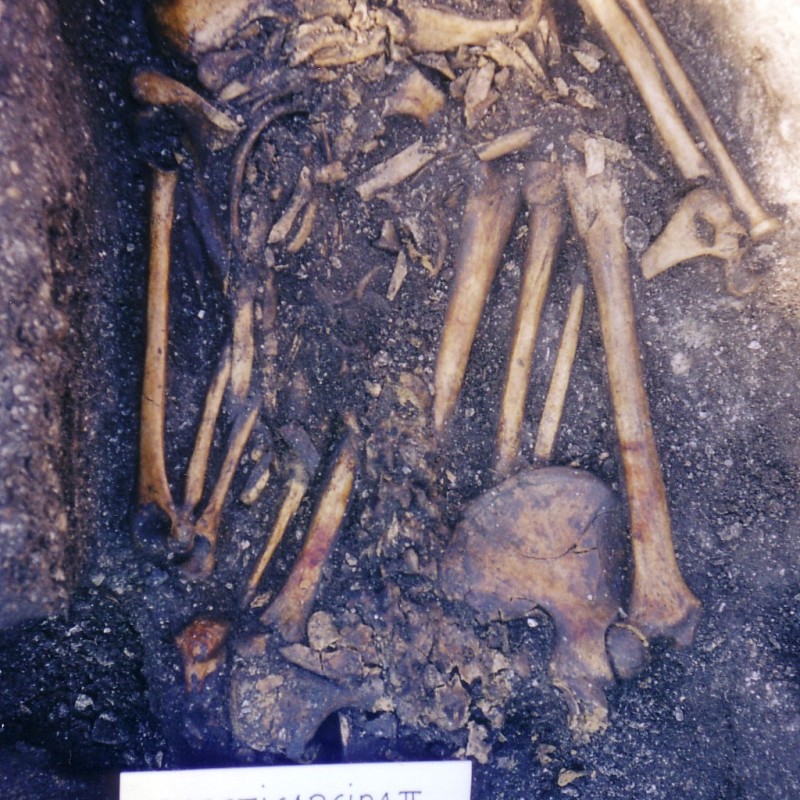Syphilis-Like Diseases Already Prevalent in the Americas before the Arrival of Columbus
24. January 2024
Researchers from the Universities of Basel, Zurich and Sao Paulo and the NHM Vienna have discovered the genetic material
belonging to the pathogen Treponema pallidum in the bones of people who died in Brazil 2,000 years ago. This is the
oldest confirmed discovery of the pathogen to date and proves that people were dying from syphilis-like diseases, so-called
treponematoses, long before Columbus sailed to the Americas. The new findings, published in the scientific journal Nature,
call into question previous theories on the spread of syphilis by the Spanish conquistadors.
The
history of the emergence and spread of infectious diseases has been of great importance for global health, and not just since
the Covid-19 pandemic. Using modern laboratory methods, researchers can now identify the smallest DNA traces of pathogens
in prehistoric finds, allowing them to trace the historical spread and evolutionary development of pathogens.
An international research group led by Verena Schünemann formerly from the University of Zurich and now from the University of Basel, in collaboration with ETH Zurich, Sabine Eggers from the Natural History Museum Vienna’s Department of Anthropology and the Universities of Vienna and Sao Paulo, has examined the bones of prehistoric people who died 2,000 years ago in Brazil’s coastal region of Santa Catarina. The pathological changes visible on some of the prehistoric remains indicate that the ancient people suffered from a disease similar to syphilis.
Prehistoric DNA from bones over 2,000 years old
Using fine drilling tools customary in dentistry, the researchers took tiny bone samples under sterile conditions and isolated the prehistoric genetic material of the syphilis pathogens, so-called ancient DNA. Their study, published in the renowned journal Nature, shows that all the bacterial genomes examined can be classified as the Treponema pallidum endemicum strain, i.e. the pathogens that cause endemic syphilis, or bejel.
Treponematoses are a group of infectious diseases also including sexually transmitted syphilis. While syphilis as a sexually transmitted disease represents a global health risk, endemic syphilis, or bejel, which is transmitted via skin contact, occurs only in the very dry areas of Africa and Asia.
“Our study has allowed us to prove that endemic syphilis was already present in humid areas of Brazil around 2,000 years ago,” says Schünemann.
The 8,000 km coastline of Brazil was inhabited around 1,000 to 8,000 years ago by people belonging to the sambaqui (or shell mound) culture, from whom the samples examined here were taken. “This enduring culture survived as long as it did thanks primarily to exchanges among its people over the centuries and thousands of kilometres. However, their networking activities across time and space also contributed to the spread of diseases,” notes Eggers (Natural History Museum Vienna). This means that people were already infected with endemic syphilis, probably through skin contact, more than 1,000 years before Columbus arrived in the New World.
Syphilis-like diseases are of pre-Columbian origin
To this day, there is intense debate among experts and medical historians as to whether Christopher Columbus’ crew introduced sexually transmitted syphilis from the New World to Europe on their return in 1493. The disease spread rapidly, particularly in European port cities, from the end of the 15th century.
“The fact that we found only the endemic syphilis pathogen in the bones of the sambaqui people at the Jabuticabeira II site and not the sexually transmitted syphilis pathogen leaves the origin question as yet unanswered,” says Kerttu Majander, postdoctoral researcher at the University of Basel and one of the lead authors of the study. For the researchers, however, there is much to suggest that treponematoses were already widespread in Europe before Columbus returned.
“We have not found any sexually transmitted syphilis pathogens in South America, making the theory that Columbus brought syphilis to Europe increasingly unlikely,” confirms Schünemann. On the contrary, earlier findings by her group in Finland and Poland, for example, indicate that forms of treponematosis were already present in Europe.
Recombination could have driven the development of syphilis-like diseases
Many bacterial species exchange evolutionarily useful traits via so-called horizontal gene transfer or recombination. The comparison of the prehistoric DNA in the sambaqui remains with today’s pathogens shows that such recombination events took place. “Although we cannot say exactly when such an exchange took place, it is probably the driving mechanism for the emergence of today’s subspecies of the pathogen family,” says Marta Pla-Díaz from the University of Basel, the other lead author of the study.
The DNA comparison also makes it possible to date the emergence of the T. pallidum family. Research shows that these pathogens must have emerged in the period between 12,000 and 550 BCE. The evolutionary history of these pathogens therefore goes back much further than previously assumed.
“Even if the origin of syphilis still leaves room for speculation, we now at least know beyond doubt that treponematoses were not unknown to Native Americans centuries before coming into contact with Europeans,” says Schünemann. She and her team are confident that thanks to the progress made in identifying prehistoric DNA, it will be possible to clarify the origin of sexually transmitted syphilis as well.
Interactions between the environment, humans and animals today
There is no evidence that there are any direct descendants of the Sambaqui builders of Jabuticabeira II alive today. However, the same region is home to the Kaingang, Guarani and Xokleng indigenous people today, which is why the study also addresses ethical and legal issues. Dr. Eggers emphasises, “The study also sheds light on historical injustices, colonisation and dispossession, which affected the integration and survival of indigenous communities and their territorial rights.”
While the study also examines the impact of diseases such as endemic syphilis on indigenous communities, it also stresses that the disease is not officially considered a current public health problem in Brazil.
Collaboration with Edson Krenak, an indigenous activist and Brazil expert, helped ensure that the wording of the study reflected cultural sensitivities.
The study also emphasises the need for a holistic approach in light of changes in the emergence and spread of pathogens resulting from climate change. Evolutionary medicine and the One Health approach, which considers the health of humans, animals and the environment equally, are crucial to addressing these challenges.
Original article:
Kerttu Majander, Marta Pla-Diaz, et al.
Redefining the treponemal history through pre-Columbian genomes from Brazil
Nature (2024), doi: 10.1038/s41586-023-06965-x
https://doi.org/10.1038/s41586-023-06965-x
Scientific enquiry note:
Prof. Dr. Sabine Eggers, Anthropology department, NHM Wien
https://www.nhm.at/sabine_eggers
Tel. +43 1 52177 571
E-Mail: sabine.eggers@nhm.at
An international research group led by Verena Schünemann formerly from the University of Zurich and now from the University of Basel, in collaboration with ETH Zurich, Sabine Eggers from the Natural History Museum Vienna’s Department of Anthropology and the Universities of Vienna and Sao Paulo, has examined the bones of prehistoric people who died 2,000 years ago in Brazil’s coastal region of Santa Catarina. The pathological changes visible on some of the prehistoric remains indicate that the ancient people suffered from a disease similar to syphilis.
Prehistoric DNA from bones over 2,000 years old
Using fine drilling tools customary in dentistry, the researchers took tiny bone samples under sterile conditions and isolated the prehistoric genetic material of the syphilis pathogens, so-called ancient DNA. Their study, published in the renowned journal Nature, shows that all the bacterial genomes examined can be classified as the Treponema pallidum endemicum strain, i.e. the pathogens that cause endemic syphilis, or bejel.
Treponematoses are a group of infectious diseases also including sexually transmitted syphilis. While syphilis as a sexually transmitted disease represents a global health risk, endemic syphilis, or bejel, which is transmitted via skin contact, occurs only in the very dry areas of Africa and Asia.
“Our study has allowed us to prove that endemic syphilis was already present in humid areas of Brazil around 2,000 years ago,” says Schünemann.
The 8,000 km coastline of Brazil was inhabited around 1,000 to 8,000 years ago by people belonging to the sambaqui (or shell mound) culture, from whom the samples examined here were taken. “This enduring culture survived as long as it did thanks primarily to exchanges among its people over the centuries and thousands of kilometres. However, their networking activities across time and space also contributed to the spread of diseases,” notes Eggers (Natural History Museum Vienna). This means that people were already infected with endemic syphilis, probably through skin contact, more than 1,000 years before Columbus arrived in the New World.
Syphilis-like diseases are of pre-Columbian origin
To this day, there is intense debate among experts and medical historians as to whether Christopher Columbus’ crew introduced sexually transmitted syphilis from the New World to Europe on their return in 1493. The disease spread rapidly, particularly in European port cities, from the end of the 15th century.
“The fact that we found only the endemic syphilis pathogen in the bones of the sambaqui people at the Jabuticabeira II site and not the sexually transmitted syphilis pathogen leaves the origin question as yet unanswered,” says Kerttu Majander, postdoctoral researcher at the University of Basel and one of the lead authors of the study. For the researchers, however, there is much to suggest that treponematoses were already widespread in Europe before Columbus returned.
“We have not found any sexually transmitted syphilis pathogens in South America, making the theory that Columbus brought syphilis to Europe increasingly unlikely,” confirms Schünemann. On the contrary, earlier findings by her group in Finland and Poland, for example, indicate that forms of treponematosis were already present in Europe.
Recombination could have driven the development of syphilis-like diseases
Many bacterial species exchange evolutionarily useful traits via so-called horizontal gene transfer or recombination. The comparison of the prehistoric DNA in the sambaqui remains with today’s pathogens shows that such recombination events took place. “Although we cannot say exactly when such an exchange took place, it is probably the driving mechanism for the emergence of today’s subspecies of the pathogen family,” says Marta Pla-Díaz from the University of Basel, the other lead author of the study.
The DNA comparison also makes it possible to date the emergence of the T. pallidum family. Research shows that these pathogens must have emerged in the period between 12,000 and 550 BCE. The evolutionary history of these pathogens therefore goes back much further than previously assumed.
“Even if the origin of syphilis still leaves room for speculation, we now at least know beyond doubt that treponematoses were not unknown to Native Americans centuries before coming into contact with Europeans,” says Schünemann. She and her team are confident that thanks to the progress made in identifying prehistoric DNA, it will be possible to clarify the origin of sexually transmitted syphilis as well.
Interactions between the environment, humans and animals today
There is no evidence that there are any direct descendants of the Sambaqui builders of Jabuticabeira II alive today. However, the same region is home to the Kaingang, Guarani and Xokleng indigenous people today, which is why the study also addresses ethical and legal issues. Dr. Eggers emphasises, “The study also sheds light on historical injustices, colonisation and dispossession, which affected the integration and survival of indigenous communities and their territorial rights.”
While the study also examines the impact of diseases such as endemic syphilis on indigenous communities, it also stresses that the disease is not officially considered a current public health problem in Brazil.
Collaboration with Edson Krenak, an indigenous activist and Brazil expert, helped ensure that the wording of the study reflected cultural sensitivities.
The study also emphasises the need for a holistic approach in light of changes in the emergence and spread of pathogens resulting from climate change. Evolutionary medicine and the One Health approach, which considers the health of humans, animals and the environment equally, are crucial to addressing these challenges.
Original article:
Kerttu Majander, Marta Pla-Diaz, et al.
Redefining the treponemal history through pre-Columbian genomes from Brazil
Nature (2024), doi: 10.1038/s41586-023-06965-x
https://doi.org/10.1038/s41586-023-06965-x
Scientific enquiry note:
Prof. Dr. Sabine Eggers, Anthropology department, NHM Wien
https://www.nhm.at/sabine_eggers
Tel. +43 1 52177 571
E-Mail: sabine.eggers@nhm.at

